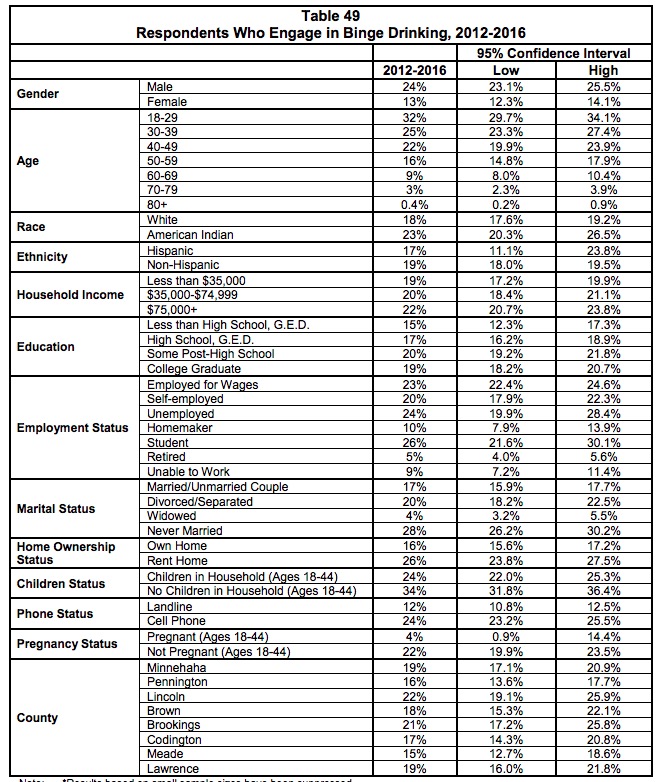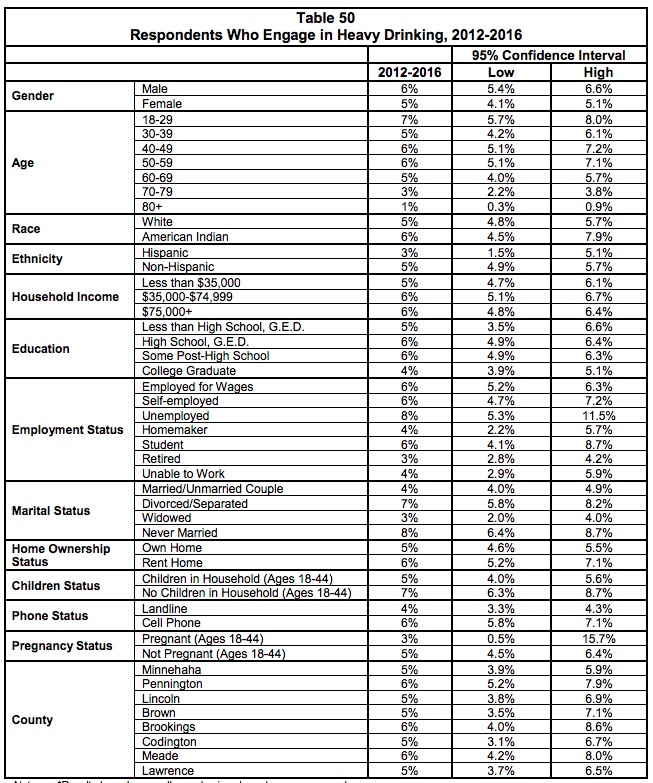Nick Lowrey’s new article on South Dakota’s increasing rate of death by liver disease is worth quoting just for his citations of transplant hepatology expert Dr. Adnan Said’s comments about the preventability of liver disease and the lack of liver treatment in rural hospitals:
“Population-wise, I think fortunately, or unfortunately, a lot of liver disease can be affected by our life choices,” Said said.
…In small towns, a lack of patients reduces the ability of providers to offer liver disease treatments. Advances in telehealth or online care have helped expand treatment options, Said said [Nick Lowrey, “S.D. Has High Rate of Death Due to Liver Disease,” South Dakota News Watch, 2019.06.18].
You’d never notice on the radio, but in print, the repetition is splendid.
Not splendid is the fact that South Dakota has the second-highest rate of death from liver disease in the nation, 17.2 per 100,000 population, up from 10.3 per 100,000 in 2005. Only New Mexico, with 26.8 deaths per 100,000, is worse on this metric. The national death rate from liver disease in 2017 was 10.9 per 100,000.
Minnesota’s death rate from liver disease in 2017 was 8.6 per 100,000, the sixth-lowest rate in the nation, beaten only by Pennsylvania, Hawaii, New Jersey, new York, and Maryland.
Lowrey notes that chronic alcohol abuse is the leading cause of fatal liver disease. He notes that alcohol use is more common among our wealthy white population:
Data gathered by the South Dakota Department of Health shows the poorest of the state’s citizens actually drink less often than the more well off. About 47 percent of those whose household income is less than $35,000 a year reported being regular drinkers, which means they consumed alcohol within 30 days of being surveyed. The number climbs to 74 percent for people whose yearly household income is $75,000 or more.
It should be no surprise, then, that college-educated people who tend to have higher incomes also tend to drink more often than those who don’t have a degree and make less. Many indicators of financial stability also seem to point to more regular drinking, including being married and owning a home.
Nearly 60 percent of white people surveyed reported having a drink in the last 30 days. In the Native American community, only 40 percent of respondents reported drinking in the past month. About 47 percent of hispanic people, meanwhile, said they drank in the last 30 days [Lowrey, 2019.06.18].
But the DOH 2016 survey from which Lowrey pulls these figures shows that South Dakotans of different races, incomes, and education levels report more similar rates of binge drinking and heavy drinking:


Our eating habits aren’t helping our livers much, either:
A big part of the problem, Al-Hajjaj said, is that high-sugar, high-calorie processed foods often are much easier to find and tend to be cheaper than more nutritious options. South Dakota’s rural nature means there are significant portions of the state’s population who have to drive long distances to get to a full-service grocery store.
“It’s easier to find a chocolate bar and a beer than it is to find a good meal,” Al-Hajjaj said.
Said, of the liver foundation, made much the same point. Areas defined as “food deserts” — areas that don’t have ready access to a full-service grocery store or similar service — also tend to have sicker populations. Those deserts tend to be located in areas whose populations have lower median incomes or are dispersed over a wide area [Lowrey, 2019.06.18].
Evidently we all need to live closer to Hy-Vee.
Lowrey’s experts say healthy diet and exercise are as important for preventing liver disease as preventing other chronic afflictions. All those folks setting traps for Governor Noem’s varmints should consider setting those traps much farther from the road, so they get in a longer walk… or maybe skip the trap altogether and spend an hour a day chasing varmints on foot. A raccoon caught by hand a day could keep liver disease away….
I hate to make this comment, but I don’t doubt these facts. I’m 67. The US set-off 93 above-ground nuclear tests at the Nevada Test Site. Scientists waiting until the winds were blowing into less populated areas. As a kid going to Lincoln Grade School in Rapid City during the 50s and early 60s…I remember days were were told we couldn’t play outside or had to rush home because the nuclear fallout was bad. Yes, we were children and knew about this and were told about this. Add to that, the poisoning of DDT, mercury and other chemicals and metals, untested for the most part, and toxicity in many South Dakotans would be higher. Such are the joys of having lived in a less populated area in those years.
When I served as chaplain at Fort Meade there were a few alcoholism-caused deaths. Most common were cancer and heart disease deaths. Alcoholism deaths were the worst in terms of suffering, shame, regret, recriminations, etc. There’s only so much medicine can do to ease physical pain. It’s got to be one of the very worst ways to go. 😥😥
Let us not discount the spiritual and nutritional value of a good chocolate bar and a room temperature beer, when the need is there. People’s systems can adapt and really wring every ounce of nutritional juice out of that stuff, given time. Ask a dietitian, I’m sure most of them would agree. Besides, if you can’t get to a grocery store then order the groceries delivered. That is what grudznick does.
Not something to be proud of for sure. Neither is Killing animals for sport.
This is why you should not want any nation to pursue nuclear weapons testing, particularly above-ground nuclear testing.
By the way, fallout from the nuclear testing by us and other nations went around the globe, not just South Dakota, and not just less populated areas.
The combustion of coal over the last century has also spread various elements in the periodic table and radionuclides as well. Just think how many millions of tons were released because we didn’t generate cleaner energy.
Pretty much nailed it Mr. Wick. Thyroid issues are very common here in South Dakota as well with the common denominator being nukes.
1. Double the number of people who “self-report” how much they drink. (see #4, below)
2. SD drinkers drink beer starting at noon and switch to Canadian blended whiskey (yuck!) at 5:00 or sooner. Other American drinkers drink beer at night and rarely drink hard liquor.
3. Liver disease comes from alcohol with the same frequency lung cancer comes from tobacco. Pollution and radiation have less than little to do with drunks dying from their booze habit.
4. The biggest mountains in South Dakota aren’t the Black Hills. The biggest mountains are the piles of BS swept under most people’s rugs.